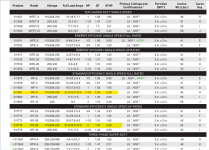The link that you provide says that the replacement motor is a 1 hp motor with a 1.65 sf and that it is the correct replacement motor for the 1.5 hp up rated WhisperFlo.
I think that the motors are the exact same motor for the full rated pump and the up rated pump. So, I don't think that it makes any difference which one you use.
I think that the motors are the exact same motor for the full rated pump and the up rated pump. So, I don't think that it makes any difference which one you use.



